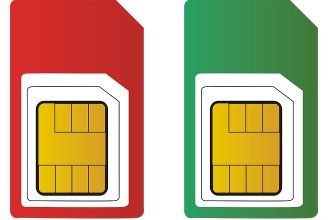Using Technology For Better Clinical Trials

One of the emerging topics in clinical research and a matter of huge concern is risks related to patient adherence. Some of the facets of patient adherence include adherence to study procedures, medications, study visit compliance as well as reporting of adverse events among others. Patient non-adherence can not only increase the overall cost of clinical trials but may also skew the outcomes.
To understand the overall impact of patient adherence, consider the fact that up to 30% decrease in medication adherence may require increase in the patient sample size by up to 50% to maintain statistical power. In case the non-adherence rate shoots up to 40%, it may require a 200% increase in the patient sample size to deliver statistically significant results. It not only results in increasing the time for product approval but also the overall cost of clinical trial. Up to 30% of the clinical trial participants may not be completely truthful about medical compliance or may throw out the investigational product before clinicians study visits, which can have a huge impact on the regulatory dosing recommendations once the product is approved.
The Reasons for Patient Non-adherence
It may be due to several reasons. One of the reasons may be consent forms as most of the consent forms are still not simple enough for patients to completely understand which often results in confusion related to medication regimens and study procedures. An Oncology Center performed a consent form analysis and found that only around 6% of the consent forms for clinical trials can be understood by individuals with up to 8th grade level education. Another analysis found that the median length for consent form was 20 pages. In simple terms, the forms are too long.
Another issue is the communication gap between patients and physicians. The analysis of patient feedback suggests that it may be due to fear on part of the patients as they do not want to disappoint the physician which results in them making untruthful statements about adherence. Another common problem is that patients tend to be untruthful as they are afraid that stating the truth about non-adherence to study procedures may cause them to drop out of the clinical trial.
Clinical trial results are affected by non-adherence of patients in a variety of ways including shift in dosing requirements and increase in sample sizes among other things. More often than not, the study teams focus on addressing the symptoms of non-adherence in a retrospective manner. This article is focused on how technology can be used by study teams to be proactive in order to address non-adherence by patients and to improve the adherence outcomes.
This is becoming increasingly important for clinicians as is illustrated in the ICON blog.

Text Messaging
It has shown promising results in enhancing the patient adherence rate in a widely applicable geo-demographic pool which is great for clinical research. A study done in Asia to measure the impact of text messaging showed that this technology improved the rate of adherence to medication in post-surgery interventions. In addition, it also helped in reducing the number of adverse events as well as symptoms related to mitigate non-adherence.
The average age of patients in this study was 58 and their education levels also varied from primary education to university. Another analysis done recently has shown that text messaging is highly effective in increasing enrolment and recruitment for clinical trials which shows that text messaging can be used as an effective tool to captivate patients when conducting clinical trials.
Gamification
It is growing in popularity as it has shown positive results regarding patient engagement. In simple terms, it allows patients to visualize the overall progress of the trial and gives rewards to patients when they adhere to the study outcomes. A web-based platform or a mobile application is typically used to deploy gamification.
A recent study has aptly demonstrated the positive effect of gamification. It showed that gamifying the refill experience for diabetes prescription helped in reducing the gap between refills by 39%. While there isn’t much data about the positive effects of gamification in the clinical research area, the results of the aforementioned study show that gamification does affect patient intervention. However, this study also implies that web-based gamification experience tends to attract younger patient populations making it challenging for clinical trials involving older patients.
Digitization and Simplification of Consent Form
As mentioned in the beginning, most consent forms tend to be too lengthy and complicated for an average patient which leads to the risk of non-adherence. It makes sense to leverage expertise of communication experts to simplify the consent form language for proper knowledge transfer to patients. Inclusion of various educational tools, study roadmaps as well as visualizations may also help patients get a better understanding of the expectations and requirements from the study.
Digitization in terms of e-consenting has also provided a completely new way of communicating with the patients. Study teams now have a better way to communicate with the group through educational videos, situational analysis and quizzes. An excellent example is the Speak out, But Speak Smart campaign which shows the benefits of using video interactions for consenting in order to better educate the study group about clinical trials and to provide the right patient training with the help of scenario analysis. These tools can be of great help to patients throughout the clinical trial participation process.
Early and Responsive Intervention is the Key
A well-known fact in the clinical trial community is that study teams act retrospectively when reacting to the patient non-adherence symptoms. Patient engagement technologies can help a lot. By utilizing these technologies throughout the clinical trial, the patient intervention outcomes may be changed through better engagement.
It also allows study teams to get a better idea about how to properly assess patient risk and better engage high-risk patients. For instance, engagement analytics may be used to detect the enhanced risk of non-adherence by a particular patient and this can be used for implementing various proactive methods for re-engaging the patient. In simple terms, it allows study teams to be proactive instead of reacting retrospectively.






